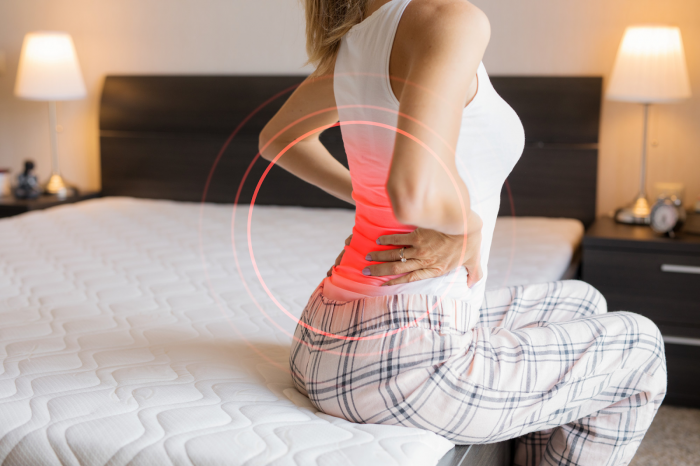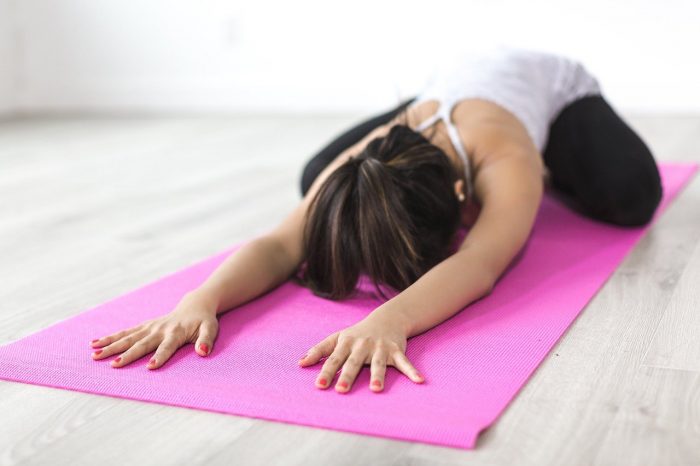Back pain is the leading cause of disability across the globe! Stress, bad posture, poor sleeping positions, sports injuries, poor lifestyle habits all contribute to back pain. It is very common but most cases aren’t caused by a serious problem. Below are our top tips to help relieve back pain:

Tip 1: Keep Moving & Limit Bed Rest
Years ago, medical advice was to stay in bed and rest for days if you had back pain. Times have since changed and we now know that moving is essential to help recovery. Not only does this minimise joint stiffness but it helps with circulation and keeps your abdominal muscles working. Bed rest for more than a couple of days makes it harder to get going. Gradually increase your normal activities and do regular exercise.
Tip 2: Use Heat or Ice Therapy
Many people ask whether using heat or ice is preferable for pain. There are different schools of thought and the answer is not always clear-cut.
Ice therapy can be used for an early injury (within 48 hours) where there is swelling and inflammation. This is beneficial if you notice that the area feels warm. You can do this by placing some ice cubes (or a bag of peas) in a damp towel on the injured site for 15-20 minutes at a time. Ice therapy is known to narrow your blood vessels at the painful site, hence reducing swelling and pain.
Alternatively, heat therapy such as a heated wheat bag or a hot water bottle works well to relax muscles that have seized up. Heat opens your blood vessels and encourages circulation to the injured site to allow healing to take effect. Many people in fact interchange between heat and ice therapy and believe that this form of treatment speeds up recovery even more so!
Tip 3: Take Some Painkillers or Anti-inflammatories
Many people refuse to take painkillers such as Paracetamol or anti-inflammatories such as Nurofen, as they believe it masks the pain. Physiotherapists often suggest that if this allows you to move rather than to remain bedridden, then it is recommended. You should always read the instructions and If you are unsure whether you are allowed to take a specific medication, you must always speak to your GP.
Tip 4: Work on your Flexibility and Core Strength
A physiotherapist’s top tip is to always listen to your body. If a certain exercise aggravates your pain, then don’t do it. If you find that a certain movement eases your symptoms, then feel free to do more of it. There is no ‘one size fits all’ exercise regime for back pain as we are all different. Range of movement, flexibility, and strengthening exercises must be specific to aid your recovery. Speak to a Chartered Physiotherapist to find out the most suitable back pain exercises for you.

Tip 5: Massage relaxes muscular spasms
Muscular spasms are sometimes a mechanism your body uses to protect itself and to stop you from injuring yourself further. It may also be a way for your body to tell you if your posture is poor, as muscular spasms are often caused by overactive muscles. Massage and trigger point therapy is a great way to relieve muscle spasms and to facilitate your recovery!
Tip 6: Consider Acupuncture or Dry Needling
The theory and practice of Acupuncture began in China around 100BC. It is a treatment where fine needles are inserted into specific acupuncture points in the body. This treatment is thought to help relieve back pain by encouraging blood supply and self-healing to the injured site. Acupuncture is considered as an “alternative” therapy and is not supported by the NICE Guidelines (National Institute of Clinical Excellence) for back pain, however, many people still find it beneficial!
Tip 7 – Think About your Sleeping Posture
Bad sleeping posture often contributes to back pain. It is recommended that sleeping with a neutral spine and good alignment is the most optimum posture for our backs. If you sleep on your side, place a pillow between your knees, or if you sleep on your back, then place a pillow under your knees. Choose a mattress that is not too soft or too firm. A medium-firm mattress is generally quite supportive for the spine and can be chosen with springs or memory foam for a good night’s sleep.

Tip 8 – Think About your Day Time Posture
Do you slouch at work on your computer all day? Do you get up every hour and move around? These are all things to consider when trying to relieve back pain. A good chair with lumbar back support and a well-aligned computer screen which meets your eyes at its centre should be considered. Shoes that support your foot arch such as a good pair of trainers would be much more posture friendly than flat shoes, UGGS, or flip flops!
Tip 9 – Back Brace – Get Rid!
Back braces only make your muscles lazy! They do not encourage your muscles to work. Physio’s would usually recommend back supports during pregnancy and after back surgery generally speaking. Start working your core muscles, Pilates, yoga, swimming, and a gradual strengthening program is what you need to relieve back pain.
Tip 10 – Call a specialist if the pain does not subside
Chartered Physiotherapists are the most ideal professionals to help you recover from back pain. Either ask your GP for a referral to your local physiotherapy clinic or visit the Chartered Society of Physiotherapy website if you are looking for a private therapist. If your pain is not subsiding after a week of your injury, it would be a good idea to seek medical advice!










